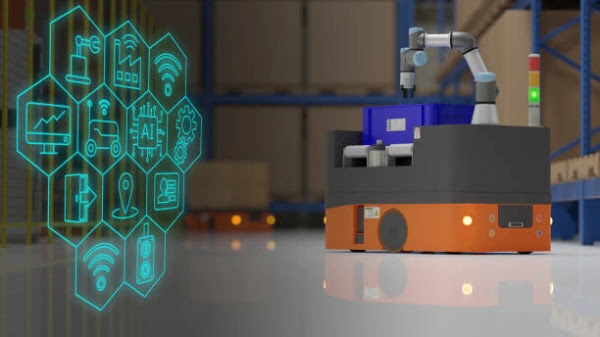Featured
- Get link
- X
- Other Apps
Smart Retail
Personalized Shopping Experiences
Introduction
Smart retail refers to the integration of advanced technologies, data analytics, and customer-centric strategies to create
personalized shopping experiences for consumers. By leveraging digital tools,
artificial intelligence (AI), and IoT devices, retailers can gather valuable
insights into customer preferences, behaviors, and purchasing patterns,
enabling them to tailor products, services, and marketing efforts to individual
needs. This essay explores the concept of smart retail, the role of
personalized shopping experiences, and the transformative impact they have on
the retail industry.
- Understanding Smart Retail: Smart
retail encompasses a wide range of technologies and strategies aimed at
enhancing the retail experience for consumers while optimizing operational
efficiency for retailers. Key components of smart retail include:
- Data Analytics: Smart retail
relies on data analytics tools and techniques to analyze customer data,
transactional data, and market trends, providing insights into consumer
behavior, preferences, and purchasing patterns. Advanced analytics enable
retailers to segment customers, identify high-value segments, and target
personalized offers and promotions.
- Artificial Intelligence (AI): AI
technologies, such as machine learning, natural language processing, and
computer vision, enable retailers to automate and personalize various
aspects of the shopping experience. AI-powered chatbots, recommendation
engines, and virtual assistants provide personalized product
recommendations, assist customers with inquiries, and enhance engagement
across digital and physical channels.
- Internet of Things (IoT): IoT
devices, such as beacons, RFID tags, and smart shelves, enable retailers
to track inventory, monitor store traffic, and gather real-time data on
customer interactions. IoT sensors integrated with mobile apps and online
platforms provide personalized experiences, such as location-based offers,
in-store navigation, and mobile payments.
- Omnichannel Integration: Smart
retail involves the integration of multiple sales channels, including
brick-and-mortar stores, e-commerce platforms, mobile apps, social media,
and virtual storefronts. Omnichannel integration enables seamless shopping
experiences across channels, allowing customers to browse, purchase, and
interact with brands anytime, anywhere, and on any device.
- Role of Personalized Shopping
Experiences: Personalized shopping experiences lie at the heart of
smart retail, enabling retailers to create meaningful connections with
customers and drive loyalty, engagement, and sales. Some key roles of
personalized shopping experiences include:
- Customized Product Recommendations:
Personalized recommendation engines leverage customer data, purchase
history, and browsing behavior to suggest relevant products and services
to individual shoppers. By delivering personalized recommendations
tailored to each customer's preferences and interests, retailers can
increase cross-selling opportunities, improve conversion rates, and
enhance the shopping experience.
- Targeted Marketing Campaigns:
Personalized marketing campaigns leverage customer segmentation and
behavioral data to deliver targeted messages, offers, and promotions to
specific customer segments. By tailoring marketing communications to
individual preferences, demographics, and purchase patterns, retailers can
improve campaign effectiveness, maximize ROI, and build brand loyalty.
- Enhanced Customer Engagement: Personalized
shopping experiences foster deeper engagement and interaction between
retailers and customers, leading to increased satisfaction and loyalty.
Interactive features, such as virtual try-on tools, product customization
options, and personalized styling services, enable customers to actively
participate in the shopping process and co-create their shopping
experiences.
- Seamless Shopping Journeys:
Personalized shopping experiences facilitate seamless, frictionless
shopping journeys across channels and touchpoints. By integrating customer
data and preferences across digital and physical channels, retailers can
provide consistent, cohesive experiences that reflect each customer's
unique needs and preferences. Seamless shopping journeys increase customer
satisfaction, reduce cart abandonment, and drive repeat purchases.
- Transformative Impact on the Retail
Industry: Personalized shopping experiences have a transformative
impact on the retail industry, reshaping consumer expectations, driving
innovation, and redefining the retail landscape. Some key transformative
impacts include:
- Enhanced Customer Experience:
Personalized shopping experiences elevate the retail experience for
consumers, providing tailored recommendations, seamless interactions, and
memorable shopping journeys. By understanding and anticipating customer
needs, preferences, and desires, retailers can create positive emotional
connections and build long-lasting relationships with customers.
- Increased Sales and Revenue:
Personalized shopping experiences drive sales and revenue growth by
increasing conversion rates, average order values, and customer lifetime
value. By delivering relevant, timely offers and recommendations,
retailers can incentivize purchases, encourage upselling and
cross-selling, and maximize revenue opportunities throughout the customer
lifecycle.
- Improved Operational Efficiency:
Personalized shopping experiences optimize operational efficiency for
retailers by streamlining processes, reducing costs, and optimizing
resource allocation. AI-powered automation tools, such as chatbots and
virtual assistants, handle routine inquiries and tasks, freeing up staff
to focus on more value-added activities, such as customer engagement and
service delivery.
- Competitive Advantage:
Personalized shopping experiences provide retailers with a competitive
advantage in an increasingly crowded marketplace. By differentiating their
brand based on personalized service, customization options, and
customer-centricity, retailers can stand out from competitors, attract new
customers, and retain existing ones in a highly competitive retail
landscape.
Conclusion
In conclusion, smart retail and personalized shopping
experiences are transforming the retail industry, enabling retailers to create
unique, engaging experiences for customers and drive business growth. By
leveraging advanced technologies, data analytics, and customer-centric
strategies, retailers can deliver personalized recommendations, targeted
offers, and seamless shopping journeys that meet the evolving needs and
preferences of today's consumers. As personalization becomes increasingly
central to retail strategies, retailers must continue to innovate and adapt to
meet the demands of a digitally empowered, experience-driven consumer base.
- Get link
- X
- Other Apps


